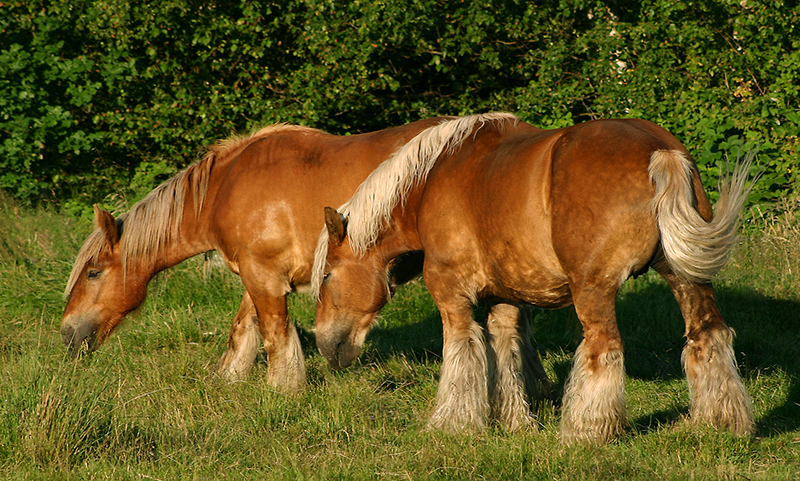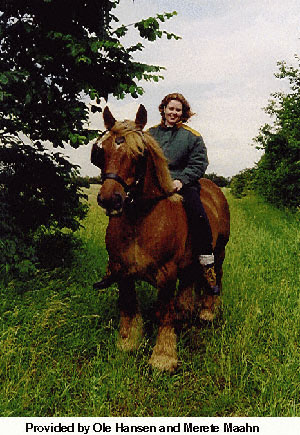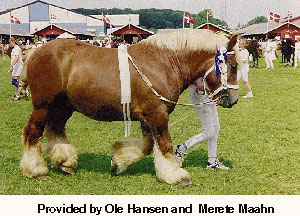Jutland Horses
Also Known By: Jydsk (Danish), Danish
The Jutland is Denmark's own breed of heavy horse. Its ancestors have been bred on the Jutland peninsula since before the middle ages. Selection for the breed, as it appears today, began around 1850. One of the greatest contributions to the success of the breed came from the stallion, Oppenheim, who was imported from England in 1862. Oppenheim was mix of Shire and Suffolk. Six generations later the stallion Aldrup Menkedal, who is considered the foundation stallion of the breed, was born. Almost all Jutland breeding can now be traced back to Hovding and Prins af Jylland, two of his sons.
Beginning in 1928, there has been a close association between the Jutland breed and the Carlsberg brewery which uses Jutlands to haul brewery wagons. At one time there were 210 Jutland horses with Carlsberg and today about twenty are still used for beer transportation in Copenhagen. The Carlsberg horses take part in many shows, festivals and films, promoting both the breed and the brewery.
The Jutland is a medium-sized draft horse with a quick, free action. Like the Suffolk, the coat is usually chestnut with a flaxen mane and tail, and the breed's connection with the Suffolk is evident in the compact, round body, the deep girth, and the massive quarters. There are also individuals within the breed which are black or brown but they are uncommon. In one respect, it differs entirely from the Suffolk, for the Jutland's legs carry a heavy feather that is not found in the former. The breed has a reputation for being docile, kind, and a tireless, willing worker. The joints on the Jutland are inclined to be fleshy. The forelegs are short and set wide apart. They are coarse of feather on the lower legs. The withers are broad and flat. The neck is short and thick and they have heavily muscled shoulders and exceptionally broad chests. The head is plain and has a squared muzzle but is not unattractive.
The Jutland, along with the Suffolk, is responsible for the Schleswig horse.
References
Candice Dayton, dayton@zelacom.com
Hendricks, Bonnie L., International Encyclopedia of Horse Breeds, Univ of Oklahoma Press, 1995.
Mason, I.L. 1996. A World Dictionary of Livestock Breeds, Types and Varieties. Fourth Edition. C.A.B International. 273 pp.



